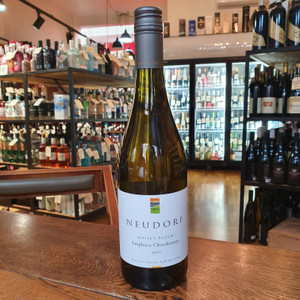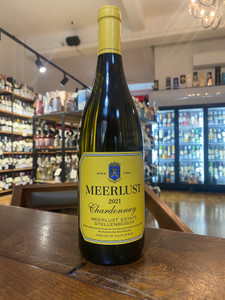
"The quest to understand the name of this wine and the wine itself is now the stuff of legend. While we are not about to reveal all, we can say that the style of the wine is a reflection of our belief that the Cape, with its Mediterranean climate, is eminently suited to blended reds.
The make-up of this wine is tweaked from vintage to vintage to best reflect the season and the ancient vines of great character that are an integral part of the wine’s charm and personality.
The nose is dark, intense and brooding with aromas of black cherries, cardamom, sweet tobacco, espresso and subtle whiffs of perfume. The dark fruit character of the nose follows through onto an exceptionally complex, juicy palate with gentle nuances of ripe plums, violets, black olives, cloves, and liquorice. The mid-palate is focused, lithe and elegant with very fine, cocoa powdery tannins. The wine is medium bodied, very balanced with an earthy, layered character, covering the entire spectrum of berry fruit - from tart red plums to rich blue and black berries. The finish is svelte, clean and dry, peppery and lingering, with hints of dried cranberry, tar, graphite and smoke.
Vintage 2019 was preceded by a very dry growing season ensuing in a record-low harvest yield. The crush was down 2% from 2018 tonnages. The optimistic retrospect of these conditions resulted in smaller, more concentrated berries due to their higher pulp-to-juice-ratio. These circumstances, along with green harvesting due to uneven bud-break, were encouraging for the making of wines with great complexity. The Swartland experienced moderate temperatures during December ’18 and January ’19 with the first heatwaves impacting the appellation during February. The picking window for The Chocolate Block was a mere two-week period. Fortunately, our even greater reliance on our vineyards from Porseleinberg and Goldmine farms made it a manageable fortnight in terms of fruit-picking and refrigerated transport logistics. By early accounts, 2019 is proving to be another good vintage for Syrah with pronounced black fruit flavours and a classic black olive nuance. The predominant variety (71%) displays a beautiful inkiness in the glass. The Grenache vineyards on Porseleinberg are becoming well-established, and this variety is undoubtedly the bright, perfumed star of the blend revealing an old, Châteauneuf-du-Pape-like charm. Old vine Cinsault remains an unheralded gem which effortlessly knits the wine together and establishes a refined elegance. At merely eight percent of this finite variety grown within the appellation, Cabernet Sauvignon is essential in providing structure and grip to the blend. Syrah and Cinsault were matured in a combination of seasoned 2,500L French oak foudres and barriques. Grenache was matured in seasoned 600L demi-muids. Cabernet Sauvignon was the only component exposed to new French oak barrique. The elevage ranged between 13 & 16 months, dependant on component and vineyard parcel. 2414 barriques were selected for our 2019 vintage."
--------THE PRODUCER--------
Boekenhoutskloof
Boekenhoutskloof was established in 1776. Located in the furthest corner of the beautiful Franschhoek valley, the farm’s name means “ravine of the Boekenhout”. Boekenhout is an indigenous Cape Beech tree greatly prized for furniture making.
In 1993 the farm and homestead was bought and restored and a new vineyard planting programme was established that now includes Syrah, Cabernet Sauvignon, Cabernet Franc, Grenache, Semillon and Viognier.
In 1996 the first vintage of Boekenhoutskloof was produced from a Cabernet Sauvignon vineyard that is still in production today. The first vintage of The Chocolate Block was produced. From this 2002 vintage, 15 barrels were bottled and released in 2003.
In 2012, Boekenhoutskloof was awarded the title of John Platter’s Winery of the Year. This guide is the premier wine guide (bible) in South Africa.

Rhone Red Blend
Franschhoek
The Franschhoek Valley is a broad vineyard-lined valley in the south-east corner of Paarl, in South Africa’s Western Cape. This small valley is home to some famous wine estates and has been producing wine since the 17th Century. Shiraz and Cabernet Sauvignon are the key grapes behind Franschhoek's full-bodied red wines. The region is also associated with the production of Cap Classique sparkling wine produced mainly from Chardonnay - Pinot Noir blends.
The vineyards of Franschhoek sit within a clearly defined valley. The Wemmershoek Mountains to the north separate it from the Breede River Valley, while the Groot Drakenstein and Franschhoek Mountains to the south protect it from heavy oceanic influences. The Berg River, originating in the Drakenstein Mountains, runs through the centre of Franschhoek towards Paarl.
Soils in Franschhoek are largely made up of alluvial sandstone, although there are deposits of granite on the slopes of the mountains in the north. While heavy soils closer to the river have some water-retaining qualities, the sandy soils on the lower slopes drain rapidly. This means that despite the reasonable amount of rainfall in the area during winter, some irrigation is still required.
Vineyards have been planted in the area since the late 1600s, when exiled French Huguenots brought their viticultural know-how to their new home in South Africa. Franschhoek (‘French corner’ in Dutch) still retains a heavy French influence today, evident in many of the names of the vineyards and in the town’s architectural style.

- Google Product Category:
- 499676






